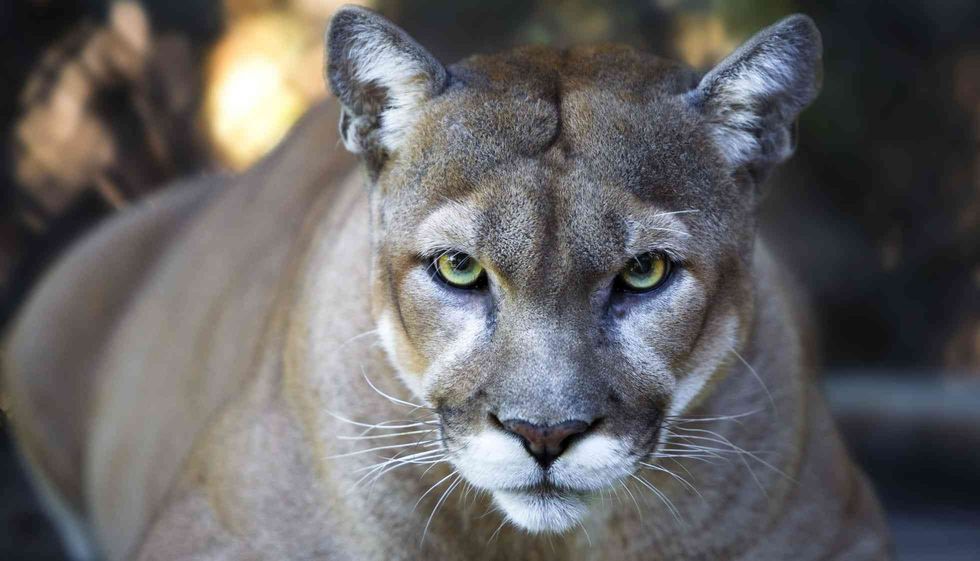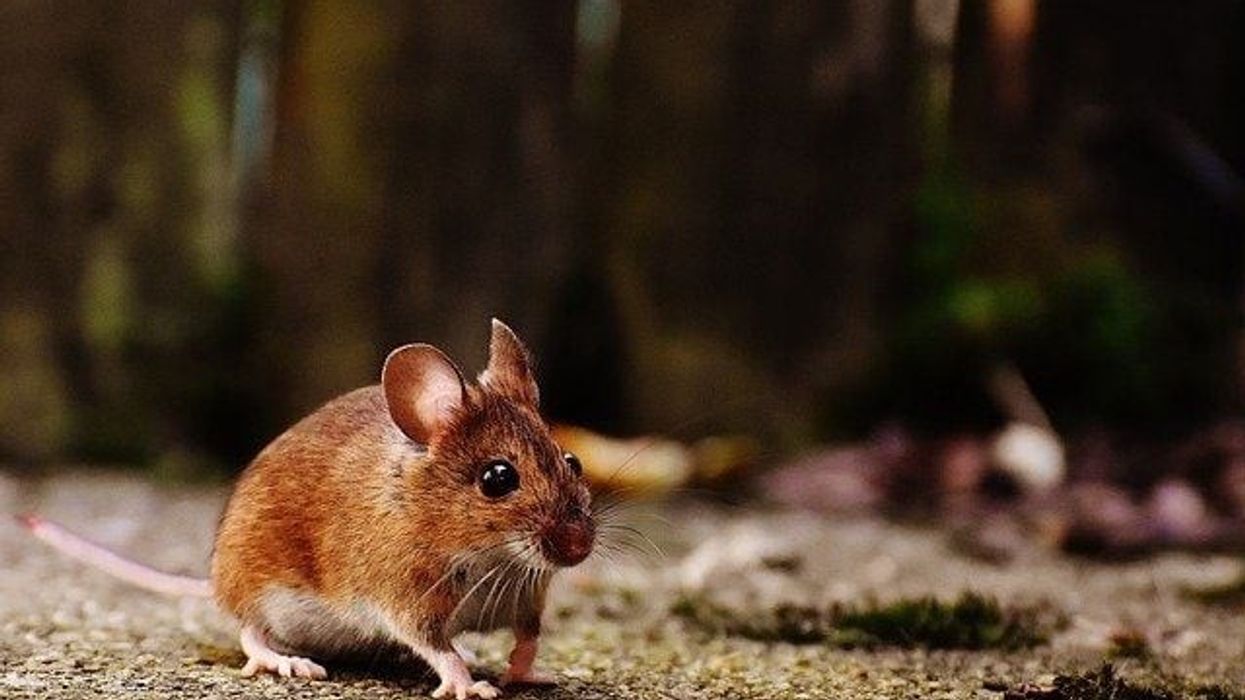The puma (Puma concolor), or the mountain lion, is a large cat found in the continents of America. 'Concolor' is the species name for the puma. It is a Latin word meaning 'of one color'. Pumas have coats that are uniformly plain in color and hence the name is apt.
Pumas are the most widespread of any large terrestrial animals, ranging from Canada (Yukon) to the tip of South America (Strait of Magellan). Because of such a wide geographical range of availability, this wild animal has a number of names given by local tribes and explorers, such as Florida panther, cougar, mountain lion, and catamount.
These types of cats have retractable claws.
Such claws help them in self-defense, climbing, gaining traction while running, digging, and catching prey.
Such claws remain retracted inside the paws until they are required and can be extended by a mere flex of a muscle in the paw. The puma ensures that its claws remain sharp and prevents unwanted wear and tear by keeping them retracted.
A puma or Florida panther is a tall, slender, big cat with powerful hind legs and a long tail. As a result, they are considered to be the best leapers in the animal kingdom.
They can make horizontal leaps as far as 20 ft - 40 ft (610-1220 cm).. They are ambush predators and prey on a variety of animals such as deer and porcupines.
They are carnivores making them dangerous for humans. But the puma is a stealthy animal and consciously avoids humans itself.
A puma making fatal attacks on people is very rare. But reports of such attacks have recently been increasing in North America, as humans encroach upon their habitat and construct establishments such as farms in their territories.
If you like this article and want to read more about animals, read these interesting animal-related articles Sumatran tiger and the tiger.
Puma Interesting Facts
What type of animal are pumas?
Pumas are a species of big cats that are large and slender with a short coarse coat and long tail.
What class of animal do pumas belong to?
Pumas belong to the Mammalia class of the Animalia kingdom.
How many pumas are there in the world?
The IUCN has estimated the total breeding population of pumas at somewhere near 50,000. As of 1996, Canada roughly estimated a population of 3,500-5,000 pumas. A 2013 report states that there are only 160 Florida subspecies of puma in the wild.
Where do pumas live?
Pumas (Puma concolor) live in a variety of habitats including swamps, grasslands, montane coniferous forests, dry bush country, lowland tropical forests, and any other areas that offer sufficient cover and food. They use rocky crevices, dense vegetation, and caves for shelter.
What is a puma's habitat?
Puma concolor has the greatest geographic range of all the large wild terrestrial mammals in the Western Hemisphere.
It ranges from the Yukon territory in Canada, through the United States, Central America, South America, and all the way to the southernmost tip of Chile and is mainly found in the continents of North and South America, and in the subcontinent of Central America.
Who do pumas live with?
Pumas are not social animals. They prefer to live in solitude, except during mating.
How long do pumas live?
The Puma concolor has a lifespan of 10-12 years. A healthy puma in its natural habitat can live to around 10 years of age. In captivity, however, the same animal can live as long as 20 years, if taken proper care of.
How do they reproduce?
Pumas are sexually polygamous in nature. Every alternate year, following a gestation period of 90-96 days, a female puma gives birth to a litter of one to six kittens.
Females give birth in dens lined with moss, in a secured place such as crevices, caves, thickets, or behind a rock shelter. Males sexually mature at about three years, while females take around two and a half years. Pumas do not breed until after they have secured a permanent home area.
What is their conservation status?
The IUCN has estimated the total breeding population of pumas at somewhere near 50,000. Central and South America have a higher population of Pumas than that of North America. Overall, the IUCN Red List classifies Pumas as Least Concern (LC), though their numbers are in a slow decline.
Puma Fun Facts
What do pumas look like?

A species of cats, pumas are large and slender with round faces, erect ears, and long tails. Their limbs are short and muscular, they have broad feet with the front and back paws having five digits each.
They have short coarse, tan, or slightly yellow colored coats. The coat color varies from grayish to yellowish-brown, except for their stomachs that are of slightly paler color.
The puma's muzzle has black stripes on it with a black border extending to the lips, and the throat and chest are whitish.
The nose is a type of pink, while the tip of its tail and the areas behind its ears are black in color. Pumas have long, cylindrical tails that are almost as long as their heads and bodies combined, and measure up to one-third of their total length.
The eye color of the adult pumas ranges from golden to grayish brown, while baby pumas have blue eyes. Puma cubs are born with spots on their fur and visible rings on their tails.
Their spots and rings begin to fade as they become old and completely disappear when they are one year of age. Baby puma cubs weigh around half a pound when they are born. They measure around 1 ft (30.4 cm) upon birth and grow as they mature.
How cute are they?
Pumas are elegant animals, having slender muscles and long tails. However, baby puma cubs are very cute, belonging to the family of big cats. They are very tiny when they are born, weighing around 0.88 lb (0400 g), and also deaf and blind. Hence, they are very cute and sweet.
How do they communicate?
Pumas communicate through olfactory (scent) and visual signals. They also emit other sounds such as spitting, hissing, snarls, and low guttural growls.
Mother pumas hiss or growl when their cubs are threatened. They give out shrill chirps and mews. Pumas also purr when together. Older cubs and adults emit whistles.
A cougar caterwaul is the most striking sound it makes. It is an eerie sound that resembles a screaming woman or a crying child. These calls are emitted by female puma species during the mating season, especially when male cougars are fighting for the same receptive female puma.
How big are pumas?
Adult male cougars grow to 6 - 8 ft (180 cm - 240 cm) long and female cougars to an average of 5 - 7 ft (150 - 210 cm).
Cougar males typically weigh 110 - 180 lb (50 kg - 82 kg) and cougar females 80 - 130 lb (36 - 59 kg) and are close in size to the other big cats like lions which measure about 5.24 - 7 ft (160 - 215 cm).
How fast can pumas run?
Cougars have strong hind legs and large paws that aid their running ability. They are best adapted for short, powerful sprints rather than long chases. They can run at high speed, ranging from 40mph - 50 mph (64.3 km/h - 80.4 km/h).
How much do pumas weigh?
Males typically weigh 110 lbs - 180 lbs (50 kg - 82 kg) and females 80 lbs - 130 lbs (36 kg - 59 kg).
What are their male and female names of the species?
A male puma is known as a tom while a female puma is known as a queen.
What would you call a baby puma?
A baby puma, born after a gestation period of 90-96 days, is called a cub.
What do they eat?
A puma is a carnivorous animal. Living in the wild, it has to resort to hunting. A puma likes to prey on deer, though it also eats smaller animals such as porcupines, raccoons, beavers, marmots, hares, and coyotes. They also hunt domestic livestock, such as calves, pigs, sheep, goats, and poultry.
They normally hunt at night or during the early hours of dawn and dusk. They can hide large carcasses and feed on them for several days. They usually eat only once or twice a week.
Are they dangerous?
A mountain lion or puma is one of the least aggressive of all the big cats and most elusive also. They are afraid of humans and try their best to stay out of the way of humans. A puma making fatal attacks on humans is a very rare incident and will attack only if threatened.
Would they make a good pet?
No, a cougar or a puma is not a social animal at all. It is very elusive and hides from humans. However, in 2016, a Russian couple adopted a cougar as a pet. The pet puma is named Messi and has become an internet sensation.
Did you know...
Puma cubs are technically born blind. They gain their eyesight as they grow older and even their eye colors change from blue to golden or grayish brown.
The puma cubs are also born with heavy spotting on their coats. This helps the tiny cubs better blend in amid vegetation, and keep safe from other wild animals. The spotting disappears as the cubs mature and grow into adult cougars.
According to Kevin Hansen's 'Cougar: The American Lion', a puma has more than 80 names, more than any other animal. They are known as Florida panther, cougar, mountain lion, catamount, any man more.
The genus puma carries the Guinness record for the animal having the most number of names, with over 40 only in English. However, uncommon to popular belief, pumas, jaguars, cheetahs, and leopards are not the same animals, even if all of them technically belong to the family of the big cats.
This big cat is distinguishable from the other members of the Felidae family, such as lions, jaguars, and others in its inability to roar like them.
Who is the best leaper in the animal kingdom and why?
Mountain lions have the largest hind legs in the cat family in proportion to their size. They have big paws too, and as a result, they can make big leaps and have the ability to make powerful, short sprints.
The cougar has been reported of making extraordinary vertical leaps of 18 ft (548.64 cm). It also is capable of making horizontal jumps, ranging from 20 ft - 40 ft (609.6 cm - 1219.2 cm).
What is special about a puma's legs?
Cougars are acknowledged for their great front paws and long tails. These tails can grow as long as 2.95 ft (90 cm) which is used for balance.
Cougars have remarkably strong hind legs, which make them one of the most powerful leapers in the animal kingdom. They have the longest legs in relation to the body size of all cats.
Here at Kidadl, we have carefully created lots of interesting family-friendly animal facts for everyone to discover! Learn more about some other mammals including the jaguarundi and the Asiatic lion.
You can even occupy yourself at home by drawing one of our puma coloring pages.










